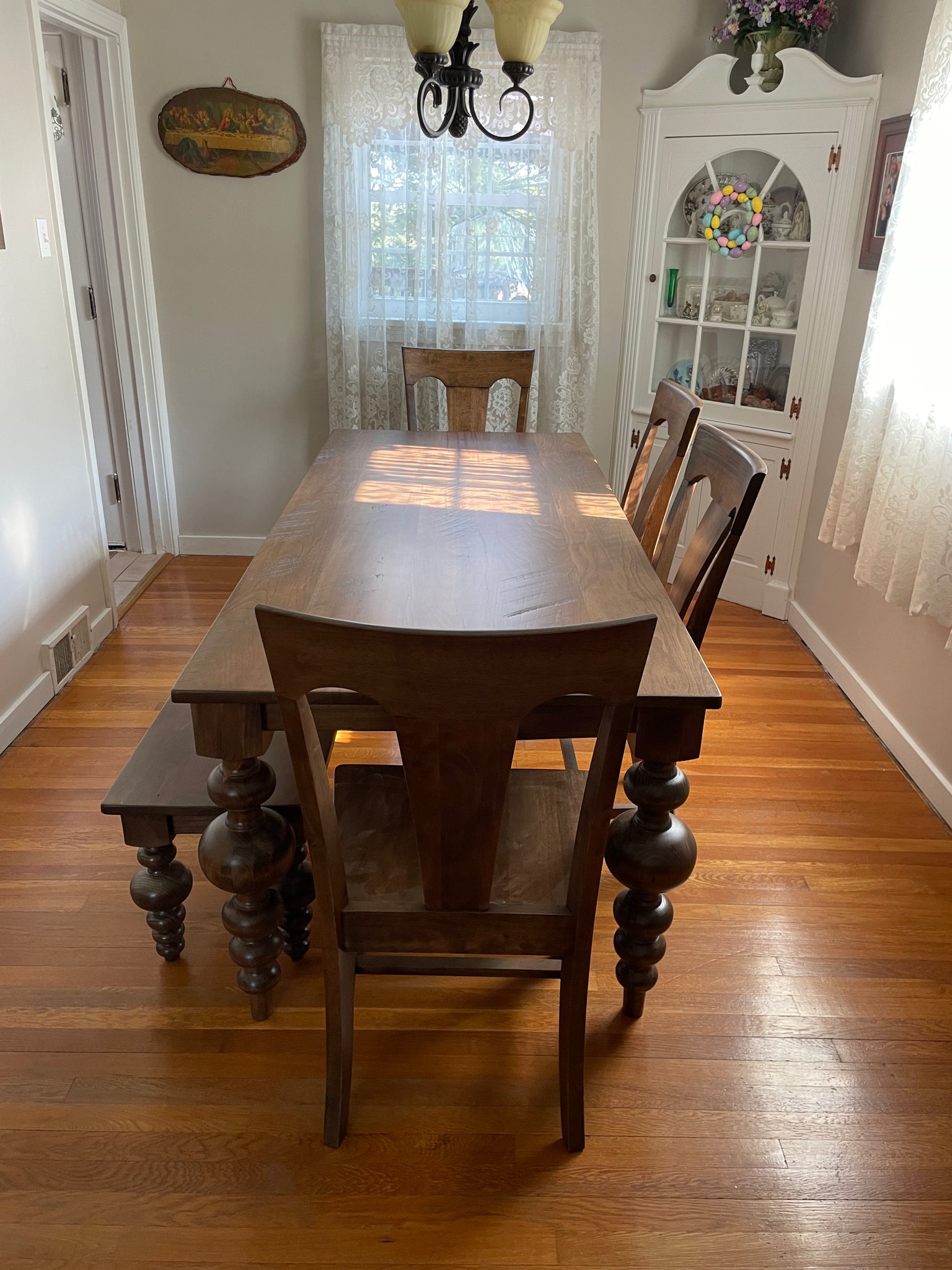Sturdy and Trendy Options for Sturdy Dining Table Legs Wood Solutions
Key Factors to Maintain in Mind for Eating Table Legs Wood Choices
When picking timber for eating table legs, numerous important factors necessitate mindful consideration to make sure both functionality and visual appeal. The option of timber kind, identified by its durability and distinct grain patterns, plays a pivotal function in the overall layout and longevity of the item.
Wood Types and Qualities
When selecting wood for eating table legs, it is necessary to comprehend the one-of-a-kind qualities of different wood types. Various timbers supply distinctive benefits and drawbacks, affecting both the toughness and visual charm of the completed product.
Oak, known for its remarkable toughness, likewise includes a famous grain that can add personality to the table. Cherry wood, with its abundant shade that strengthens over time, provides a lavish look yet may require more upkeep to protect against scratches.
On the various other hand, softwoods like yearn and fir are more budget-friendly and simpler to function with, yet they are less long lasting than woods. Pine is lightweight and includes a warm, rustic appearance, making it a popular choice for informal eating settings. It is much more at risk to scrapes and dents.
Recognizing these characteristics will certainly aid in making a notified choice to guarantee the legs of the eating table fulfill both useful and aesthetic requirements.
Grain Patterns and Appearance
The wood's grain is not simply a visual attribute; it imparts a special individuality and beauty to each item. Various wood types display unique grain patterns, ranging from the straight lines of maple to the complex swirls of oak and the striking figure of walnut.
In addition, the alignment and range of the grain can influence the perceived dimension and beauty of the table. For example, bigger, extra pronounced grains might offer a strong, significant effect, while finer, subtler grains can develop a fine-tuned, downplayed appearance. Furthermore, the completing procedure can even more improve these patterns, highlighting the natural elegance of the wood and bringing out abundant shades.
Ultimately, the selection of grain pattern must harmonize with various other style elements, such as the table top and surrounding furnishings, guaranteeing a natural aesthetic that boosts the dining experience. Thoughtful option of wood grain not only adds to the table's appeal however also reflects the proprietor's preference and style.
Toughness and Strength
The toughness and toughness of eating table legs are extremely important factors to consider for ensuring longevity and stability in any dining room. Picking the appropriate timber is crucial, as different varieties show differing degrees of strength.

Ultimately, buying top quality wood and robust construction approaches will certainly generate an eating table that stands the examination of time, while giving a dependable foundation for numerous meals shared amongst friends and family. Focusing on durability and strength makes certain that your table stays practical and aesthetically pleasing for years ahead.
Upkeep and Care
Proper upkeep and treatment are crucial for protecting the sturdiness and strength of eating table legs made from timber. Routine cleaning is crucial; making use of a soft, moist cloth makes certain that dust and debris do not gather, which can cause scratches and monotony. It is recommended to avoid rough chemicals or rough products that might harm the surface.
Additionally, using a suitable timber polish or wax occasionally can assist keep the shine and shield the wood from moisture and spills. It is essential to follow the maker's recommendations pertaining to the type of item to utilize, as particular surfaces might respond detrimentally to specific chemicals.
Moisture and temperature variations can likewise influence wood table legs, creating them to warp or split. It's best to position the table far from direct sunshine and warm resources. If the table legs have any damages or scratches, addressing these immediately can protect against additional damage.
Lastly, regularly inspecting the joints and screws for tightness is essential to keep architectural stability (Dining Table Legs Wood). By sticking to these look at this website maintenance methods, home owners can ensure their wood table legs continue to be practical and attractive for years to come
Environmental Factors To Consider
When selecting wood for dining table legs, it's crucial to take environmental factors to consider right into account. The sourcing and sustainability of timber are critical in decreasing eco-friendly impact. Choosing timber from qualified resources, such as those supported by the Forest Stewardship Council (FSC), ensures that the lumber is collected properly, advertising forest preservation and biodiversity.

In addition, neighborhood sourcing of timber reduces transportation emissions, sustaining regional economic situations while lessening ecological influence. It is likewise advisable to be aware of the wood's treatment and completing procedures, as specific chemicals can be hazardous to find out here now both human health and the environment. By focusing on lasting wood options, consumers can contribute to ecological preservation while enjoying the longevity and elegance of their dining table legs.
Conclusion
In conclusion, choosing timber for eating table legs necessitates mindful consideration of various elements, including wood kinds, grain patterns, and sturdiness. Upkeep demands and ecological sustainability further impact timber selections, emphasizing the value of sourcing from accredited or redeemed materials.
When selecting timber for dining table legs, several crucial elements require careful consideration to guarantee both functionality and visual appeal.Proper maintenance and care are crucial for preserving the sturdiness and stamina of dining table legs made from wood.When choosing wood for dining table legs, it's necessary to take ecological factors to consider into account. By focusing on sustainable timber choices, consumers can contribute to environmental conservation while enjoying the sturdiness and charm of their eating table legs.
In verdict, choosing wood for dining table legs demands click for more careful consideration of different factors, including timber kinds, grain patterns, and durability. Dining Table Legs Wood.